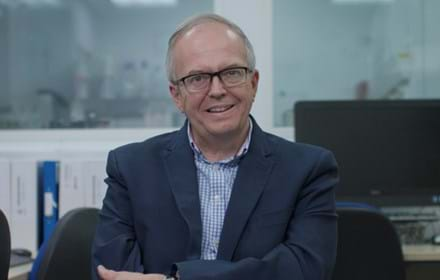
Report from Day Two of the New Horizons in Diabetes Research conference in Sweden
DRWF Research Manager Dr Eleanor Kennedy blogs from the second day of the New Horizons in Diabetes Research meeting at Uppsala University, Sweden.
The second day of New Horizons in Diabetes Research in Uppsala dawns bright and sunny and we are in for a treat – a whole day of talks ranging from closed loop/artificial pancreas technologies to the way cities and sleep patterns affect our health.
The first talk I attend is from Professor Klearchos Papas from the University of Arizona who addresses the debate that still rages about the potential benefits and disadvantages of islet cell transplantation.
Islet cell transplantation
Islet cell transplantation remains an expensive possible treatment option for type 1 diabetes and pathways to accelerate its success and large-scale application are still being sought.
The shortage of human islet cells donors, low islet yield and consistent quality as well as the rejection of islet cells by the immune system remain barriers, but now there is next generation encapsulation and enhanced oxygen supply as well as new immune therapies to look forward to.
However, a new strategy that he discusses is the effect of oxygen supply on the size of implantable islet-containing encapsulation devices.
Islets are complex “organoids” and ones that are highly sensitive to hypoxia or a lack of oxygen. Well oxygenated encapsulated islet appear to reverse diabetes but encapsulated islets that are less well oxygenated do not.
Stem cell biology
Next up is Dr Diego Balboa from the University of Helsinki who is taking a different angle – stem cell-derived islet cells and regenerative medicine. He is using complex technologies to genome edit cells and it is a fascinating insight into what is happening in the world of stem cell biology.
It is a great talk, made all the better by acknowledgement of funding by Diabetes Wellness Suomi, our sister organisation based in Helsinki, Finland responsible for funding some of this work.
On the basis of the work that he did in Finland, Dr Balboa has now been offered a position in Spain working in the very prestigious laboratory of Professor Jorge Ferrer.
This is a lovely demonstration of our funding to young researchers allowing them to flourish in the international world of diabetes research.

Closed loop studies
Professor Roman Hovorka, a leading light in the artificial pancreas movement from the University of Cambridge in the UK, then walks us through all of the closed loop studies that have been done to date – in adults, in children and in pregnant women.
No groups appear to have been left untested! The system has been proven over and over again to be particularly beneficial during the night-time and it receives very positive reviews allowing people reassurance and peace of mind, confidence, safety and improved sleep and, importantly “not having to think about it!”.
But he stresses that it is important to realise that, despite the well-documented benefits, the picture is far from rosy. Calibration difficulties, the size of the equipment and of the sensors, its accuracy and trust, the alarms and discomfort and the frustration when the equipment fails have all led to quite high attrition rates as people in the clinical trials stop using the device over prolonged periods of time.
Whilst the research has moved on and the system is now even being trialled on people with type 2 diabetes on an inpatient basis, the issue of adoption into clinical practice remains problematical. Professor Hovorka reminds us repeatedly that user training and staff training should not be underestimated.
From here, there was a dramatic turn in the focus of the conference away from the islet genetics and molecular biology and 3D architecture to something completely different. How our environment affects the way we live.
Diabetes “rule of halves”
Dr Anna-Maria Volkmann from University College London reminds us that, in 2014 65% of people with diabetes lived in urban areas. By 2040, this will have risen to 74%. She then describes a novel “rule of halves”.
Of the estimated 437 million people worldwide living with diabetes, only around 50% are actually diagnosed. Of this number, around 50% receive care and just around 50% of these people achieve treatment targets. With just 50% of that number achieving desired outcomes.
In different cities, this final figure is vanishingly small and she highlight different factors that are at play - many people have social, cultural or and other determinants that prevent them from being diagnosed and receiving treatment.
For example, 64% of people interviewed in Houston, Texas reported some form of time poverty that significantly impacted upon health and wellbeing. In other cities, including several in China, diabetes is considered stigmatising thus leading to a withdrawal from social activities and this social isolation has an additional impact on mental health. In still other cities, there is a perceived mistrust in the healthcare system and in medical advice leading to use of often indigenous alternative care options.
Dr Brent Loken, a conservation scientist and director of science translation for EAT, an Oslo-based organisation that focuses on the global food system, spoke eloquently about the importance of food and how what we eat affects the planet.
In order to achieve healthy and sustainable diets for 10 billion people by 2050, we need a drastic shift away from eating animal sourced proteins and towards a plant-based diet.
Links between environment pollutants and diabetes
Finally, Professor Duk-Hee Lee from Kyungpook National University in South Korea discussed another societal issue, namely the potential links between environment pollutants and diabetes. She argued that lipophilic chemical pollutants in adipose or fat tissue may be key in the pathogenesis of type 2 diabetes.
Many of the so-called POPs – persistent organic pollutants – have a very long half-life and are resistant to biodegradation. Moreover, in her studies, the association between POPs and diabetes became stronger as people became more obese.
So, at the end of two packed days of seminars, I leave Uppsala with my head spinning full of everything from the immune attack of islets and being able to watch beta cell regeneration in zebrafish to how where we live, what we eat and even the air that we breathe may impact on our predisposition to diabetes.
And my head is about to spin even more as I’m heading straight from Uppsala to Barcelona in Spain for this year’s EASD (European Association for the Study of Diabetes) conference. More cutting-edge science. More mind-blowing presentations. And even more hope for the future.
Read Dr Eleanor Kennedy’s report from Day One here
Support DRWF by making a donation here
Find out more about DRWF-funded research here
Find out more about DRWF fundraising here
For latest update follow DRWF on Facebook, Instagram and Twitter
To receive the charity’s latest bulletins as they become available, please sign up here
Read DRWF diabetes information leaflets here
Join the Diabetes Wellness Network here
I would like to make a regular donation of
I would like to make a single donation of
There are lots of ways to raise money to support
people living with all forms of diabetes.
Bake, Swim, Cycle, Fly ... Do It For DRWF!
Fundraise with us
Recent News


